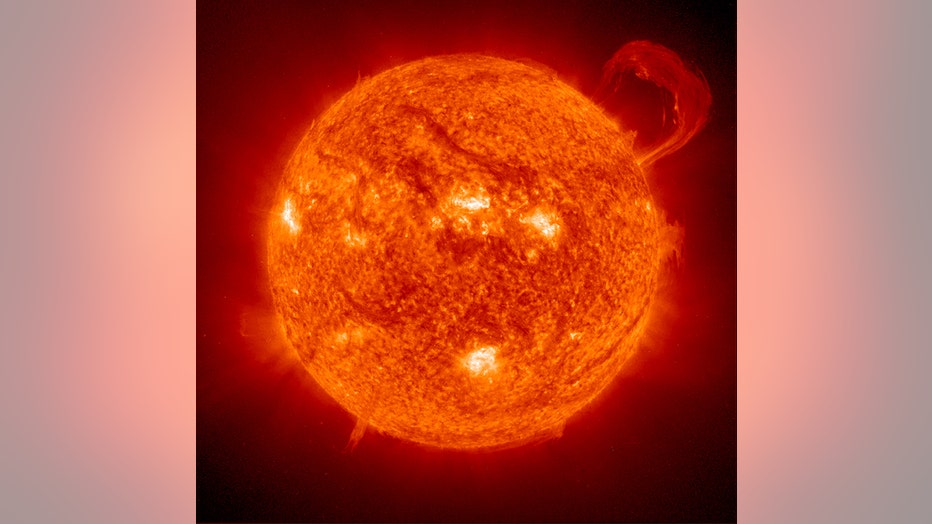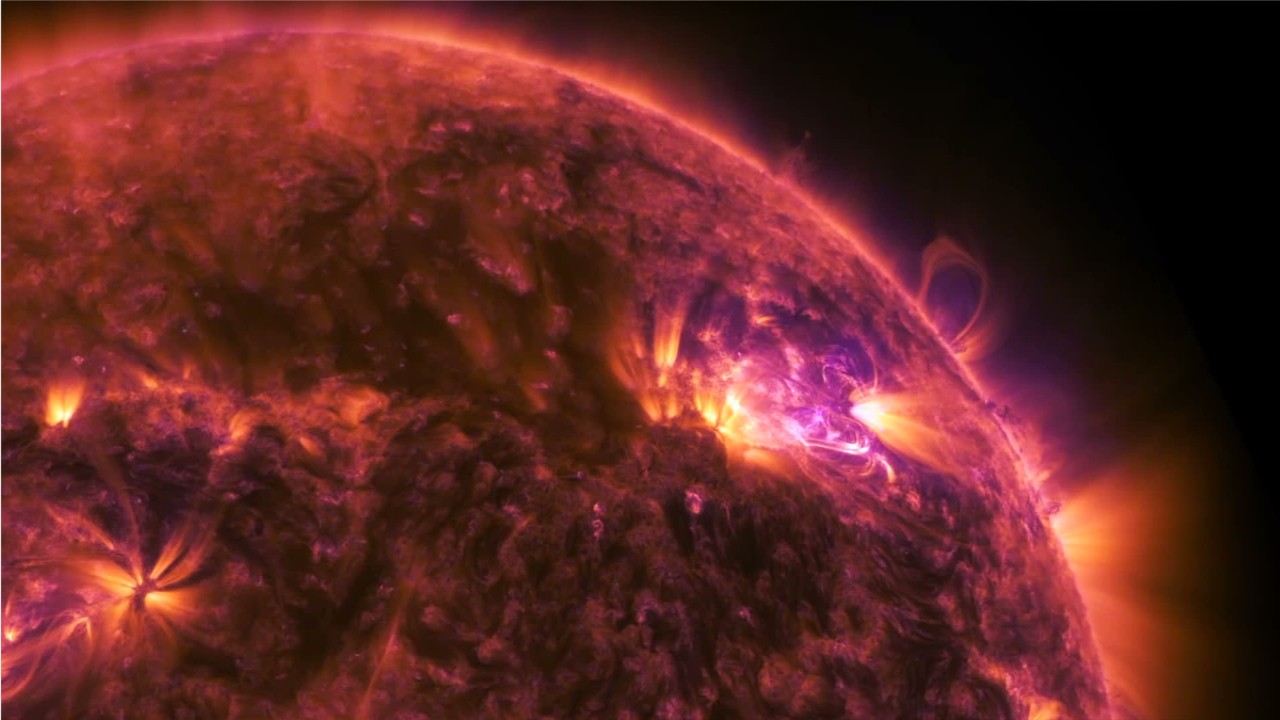Sun heading toward less active phase, but won’t cause 'mini ice age,' NASA says
WASHINGTON - The sun appears to be heading toward a less active phase, but contrary to some recent reports sparking fears on social media, it won’t cause a “mini ice age,” scientists say.
The star at the center of our solar system naturally goes through phases and changes in its lifetime, which have become more predictable to the astronomers who study it. Some of these changes happen in regular 11-year intervals with periods of higher activity, resulting in more solar flares and sunspots, and lower activity with fewer solar flares and sunspots.
The sun is currently heading toward the end of this 11-year cycle and into a period of less activity, known as a solar minimum, Dean Pesnell of NASA's Goddard Space Flight Center noted in 2017.
"During solar minimum, the Sun's magnetic field weakens and provides less shielding from these cosmic rays," Pesnell writes. "This can pose an increased threat to astronauts traveling through space."

Scientists say the sun goes through a period about every 11 years in which sunspots fade away, bringing a period of relative calm, known as a solar minimum. It’s predicted to be heading toward this phase now. (Photo credit: ESA/NASA)
NOAA's Space Weather Prediction Center also estimated the next solar minimum between cycles 24 and 25 would occur around April 2020, give or take six months — meaning that the sun is either already at a solar minimum or is about to enter it.
Furthermore, some scientists have suggested that a “Grand Solar Minimum” could occur in the next few decades, in which the sun becomes quieter, experiences much fewer sunspots and gives off even less energy, according to NASA’s Global Climate Change blog.
The last time this happened was between 1650 and 1715, when it coincided with a period known as the “Little Ice Age” in the Northern Hemisphere. During this time, a “combination of cooling from volcanic aerosols and low solar activity produced lower surface temperatures,” NASA writes.
News of the sun entering this predictable solar minimum sparked fears online of freezing weather and famine ahead, leading to the phrase “sun lockdown” to trend on social media last week amid worldwide lockdowns due to the coronavirus pandemic.
But scientists say it won’t cause another mini ice age, as most warming on Earth is actually caused by human-induced greenhouse gas emissions. These emissions from the burning of fossil fuels is six times greater than the possible decades-long cooling from a prolonged Grand Solar Minimum, according to NASA.
“Even if a Grand Solar Minimum were to last a century, global temperatures would continue to warm,” NASA writes on its blog in a Feb. 2020 post titled “There Is No Impending ‘Mini Ice Age.’”
“Because more factors than just variations in the Sun’s output change global temperatures on Earth, the most dominant of those today being the warming coming from human-induced greenhouse gas emissions.”
NASA’s Sun & Space account even decided to weigh in on Twitter this week to calm concerns of a possible doomsday.
"The Sun goes through regular cycles of high & low activity. This cycle affects the frequency of space weather events, but it doesn't have a major effect on Earth's climate — even an extended minimum wouldn't have a significant effect on global temperature."
RELATED: Researchers discover potential super-Earth orbiting star closest to our sun
This story was reported from Cincinnati.


